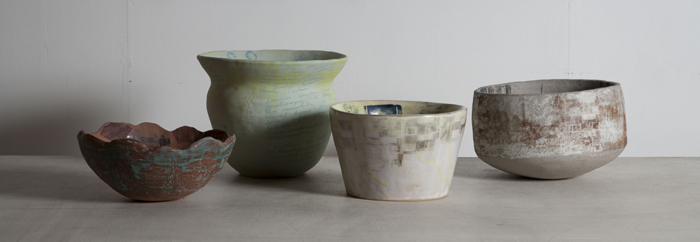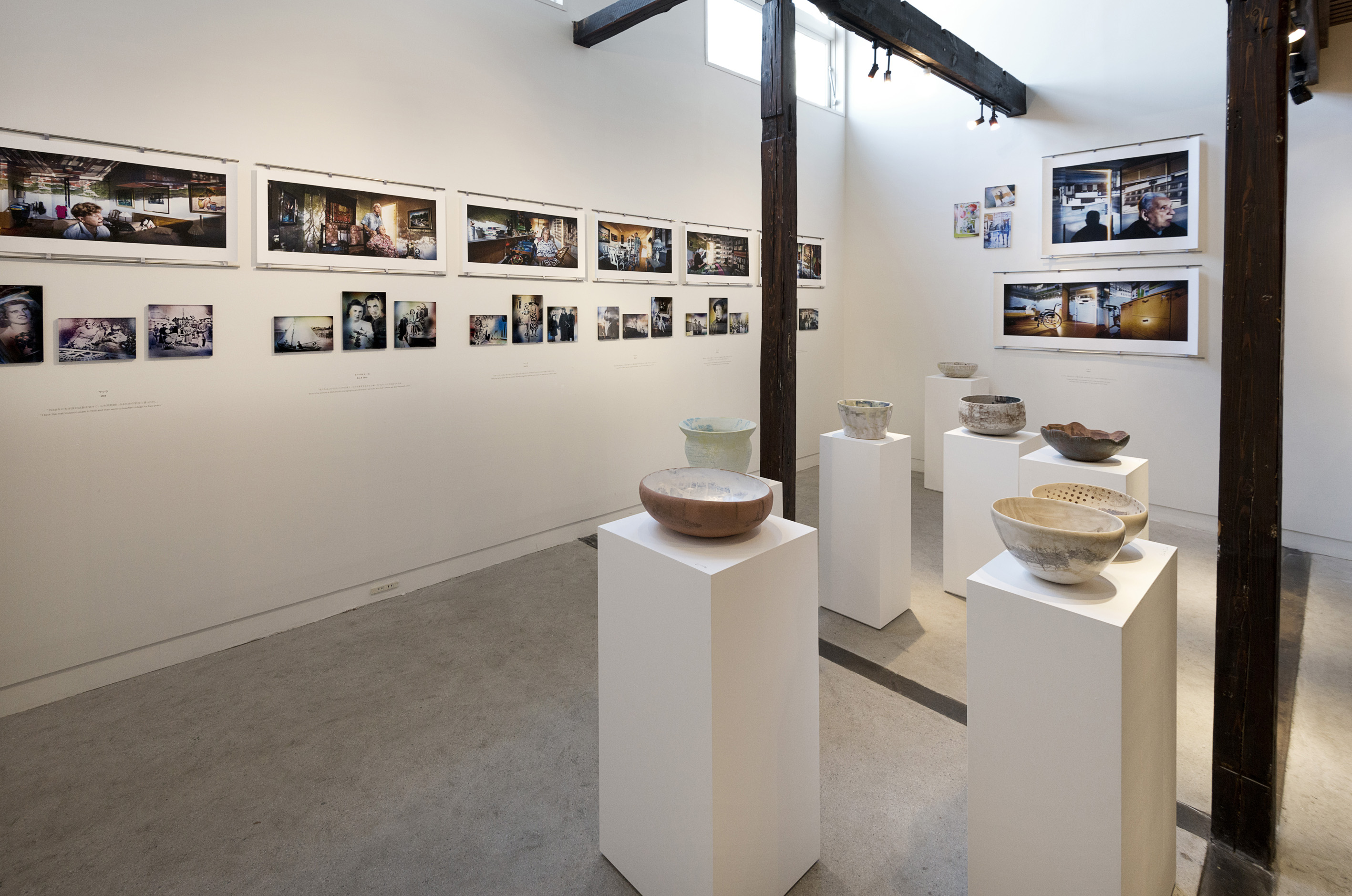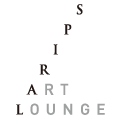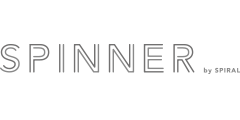Welcome to our ‘spiral market selection’ interview series, where we look at living from the viewpoint of artists and creators engaged in craftsmanship for daily life. For our twelfth interview, we spoke with the ceramic artist unit of Satoko Sai and Tomoko Kurahara.

──Ceramic as a medium
Tomoko Kurahara:
At art university, Satoko was working on cups as one of her components, and I was using transfer technology to make ceramic tiles. We got talking about using transfers on Satoko’s cups and when we tested it out, it looked pretty cool.
Satoko Sai:
When we graduated, we gave the cups we had worked on as gifts to our teachers and advisors. Everyone urged us to continue our collaborative work, and that’s how our unit was born.
We were both enrolled in a program that focused on making ceramics as objects of contemporary art rather than as practical pieces. We were always exploring the possibilities for pieces more intertwined with daily life, with elements of artistic thought and design, but taking the form of bowls and dishes.
Tomoko:
Given that was our starting point, even when we design ceramic tableware, we first start with a theme and then decide how to create pieces that realize that theme. We select techniques that match the image of our theme, such as casting, stamping, and hand-shaping. Ceramic is the medium into which we infuse our production concept.
Satoko:
I think it’s been beneficial that our start in the world of ceramics was not simply about acquiring techniques for creating tableware. That’s allowed us to create more freely using all kinds of techniques.
Tomoko:
The transfer techniques we use in our pieces were originally developed to enable mass-production. But because we make all our woodcut prints by hand, our emphasis is on the unique features that they bring about. We never grow tired of it because of the smudges and blots that emerge, precisely because our pieces are handmade.

──Leveraging our strength as a unit for mid-size production volumes
Tomoko:
Operating as a duo, we can achieve higher production volumes than individual artists. And we want to work on objects that become a part of people’s daily lives – neither one-of-a-kind pieces nor mass-produced items. Our idea was to use photos and woodblock prints to simplify reproduction on ceramics, and that’s why our work is focused on ceramic pieces that combine handwork with techniques for re-printing, such as plaster molds and silkscreen transfers. In parallel to that work, we create one-of-a-kind artistic pieces. We find both those endeavors fun and challenging.
Satoko:
Even for the lines with higher production volumes, we emphasize visual beauty and our original concept over the usability of a dish, but of course we don’t want to make something people can’t use. Take for example plate-shaped dishes: we’re interested in the different ways people choose to use them, be it for food, soap or as a jewelry plate. We find it fascinating to see customers’ photos of how they use our pieces – they’re much more playful and inventive than we ever imagined.
Tomoko:
With the size, too, our focus is more on quality and feel, than on size. When the pottery is still unglazed, we polish it smooth, and we water-sand a piece again after the final firing. We want it to feel good when people hold it in their hands.
Satoko:
We make all our own glazes, and because we want a layered tone, with every piece we conduct all kinds of tests, layering undercoats and glazes. Another distinguishing feature of our works is that the colour is kneaded into the clay itself. In the “taffy” series that we’re exhibiting this time, colour has been kneaded into the clay, and we hope people will appreciate the beauty of those tones. Until now, we’ve used many bright pastel colors, but recently we’ve been talking about looking for more subdued tones.

──Incomplete pieces finished in the hands of the beholder
Satoko:
The inspiration for our works comes predominantly from everyday images. We used to do lots of traveling, but now because we both have small children, we decide our concepts by discussing the things around us now and how we feel in each moment. We so often share the same vague images that lead us to a concept.
Tomoko:
Images also come to us from paintings. It’s always fun to see what kind of finished pieces arise from our shared ideas.
Satoko:
One other thing we often talk about is how even though we aim to make useful objects, they’re actually not finished pieces. This is because there’s scope for them to take on different faces in the lives of the people who take them home.
One recent project we’ve taken on is a collaboration meal with food artists using the “year plates” that we produce at the end of each year. It’s so refreshing to have them plan a meal and design plating in keeping with the design of our plates. We get just as excited as the guests!
Tomoko:
We also do order-made creations, weaving a customer’s story into each piece. We’d like to do more of that going forward.
Satoko:
Our customers tell us their story and we create to fit with their themes – we truly love that kind of work.
For our “inner landscapes” collaborative art project with Finnish photographer Marja Pirila, we spoke to the models who appear in her photographs before making our portrait pieces. Much like our order-made pieces, the basis for these works is interaction with people. We can’t create these objects unaffected by emotion. Together we gather the various societal and human elements that we feel matter and we try to give shape to them.
In our production process, the very first step is discussing what kind of pieces we wish to make. We talk about reactions and opinions from those around us, our moods, and the atmosphere of the times. I think the way we do things today is pretty much built on those experiences.
Interview and editing by Spiral

They have presented their works at exhibitions in Japan and Finland. Skillfully combining handcrafting with techniques for mass-production, such as silkscreen transfers and shaping through the use of stamping and plaster molds, the duo is able to maintain mid-size production volumes whilst treasuring the individual expressions that appear coincidentally during the production process.
Instagram ID: saikurahara
http://www.saikurahara.com
Satoko Sai+Tomoko Kurahara items available for sale at Spiral Online Store

Spiral Online Store Satoko Sai+Tomoko Kurahara Special Page

Venue:Spiral Market
※ The event has ended.





